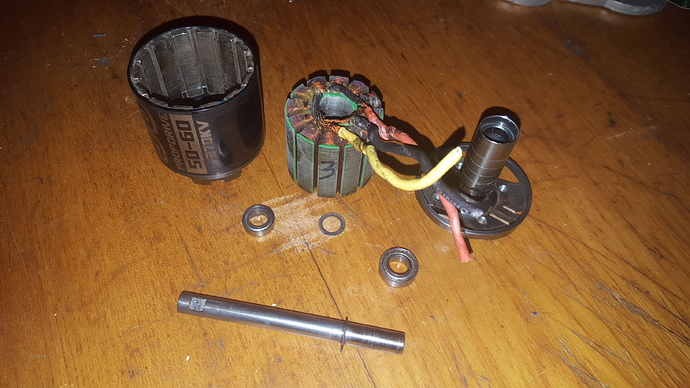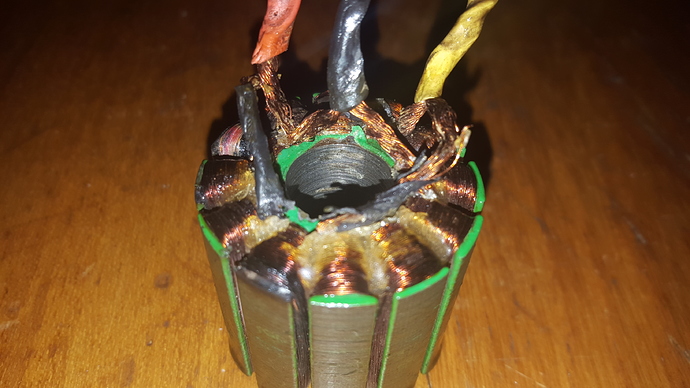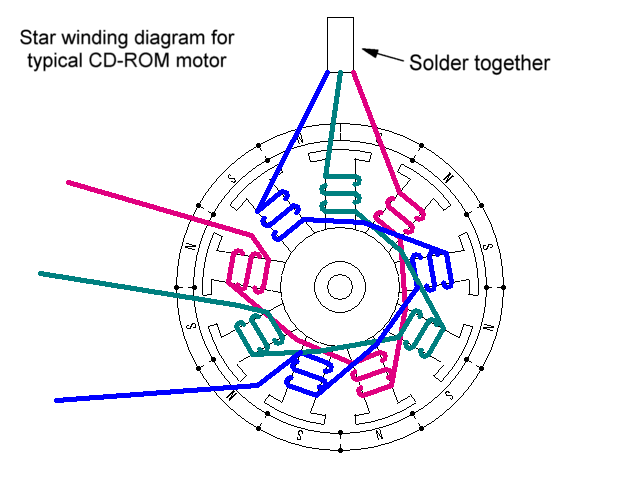Okay, so as per the edited title, this will be the thread of all threads for NTM Prop Drive 50-60 rebuilds. Watch the space.
OP:
So after running my newly finished board (will post a build post soon!) for a few weeks, I’ve learned a lot. After the first run, I very absent mindedly left the batteries plugged in over night (didn’t have a power switch by that point), and I ended up overdischarging my 8s LiPo pack to below 0.5 V per cell. I ended up recovering 7 of the 8 cells, but the other one would only build up to about 0.9 V, and then it would discharge straight back down to 0.0 V in about 2 minutes.
In any case, I’m running two NTM Prop Drive 50-60 270Kv motors, one on the front right and one on the rear left. I noticed from the start that the rear was running way hotter than the front one, but I didn’t take much notice of it. Now running on only 7s, using an APS 120 A Twin ESC, I must have pulled too much current through the rear motor going up a hill, and I have very clearly burnt the windings in at least two places, verified with a multimeter. In any case, the motor still runs, albeit a bit less smoothly than the front motor and puts out about 20% less power and gets really hot.
The bearings on both motors are also absolutely stuffed.
With zero help from the well known Hobby supplier that I got these from, either in terms of replacement/money back for the one motor that was clearly a dud from the start, or in terms of any indication as to when they will be getting stock of the 50-60s again so that I can fork out for replacements, I’m forced to make another plan. Either I can get some more expensive work alikes, or get a set of bigger motors, which would necessitate a redesign of the mounts etc, or finally, rebuild the motors.
I’m going to go for the option of rebuilding the motors. I plan on fitting some high quality bearings and rewinding the motors. DIY. #punk
I have a few questions, for anyone that has any experience with rewinding motors and eboard setupts.
1: Is it worth it to try and rewind these motors for a lower Kv and/or higher load capacity? Does anyone have any ideas as to what sort of winding spec I should go for to achieve this, off the top of the head? I could spend some time working it out, but I may just rewind the motors as is.
Which brings me to my second question:
2: Does anybody know any details as regards the winding configuration on these motors? I’d like to know what I’m getting into before I pull the thing apart, just in case I mess something up and can’t work it out myself.
I’ll be looking for: termination style (wye/delta), winding pattern around the stator, number of turns, wire gauge, number of strands per wrap. That’s probably about it.
Would be great if anyone has this info!
3: Would it be possible to use a thicker/thinner gauge of wire, with less/more strands per wrap? What are the pitfalls here?
I would imagine to get the same performance out of the motor, I would need to keep the number of turns and the cross sectional area of copper of each turn the same. Is this correct? I would imagine that thicker wire would be harder to get a neat wind around the stator, due to the fact that there is more negative space around the wires for the same cross sectional area. Thicker wire would probably be more durable though. Does anyone have any advice here?
That’s it so far! Need to get myself a heat gun so I can pull the stator.





